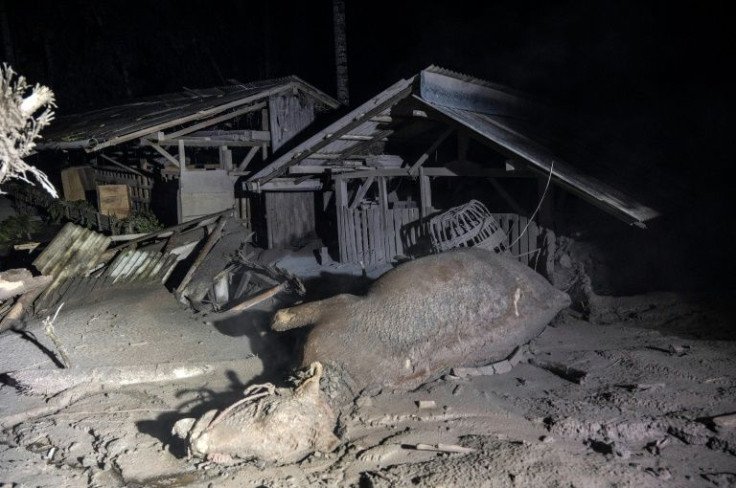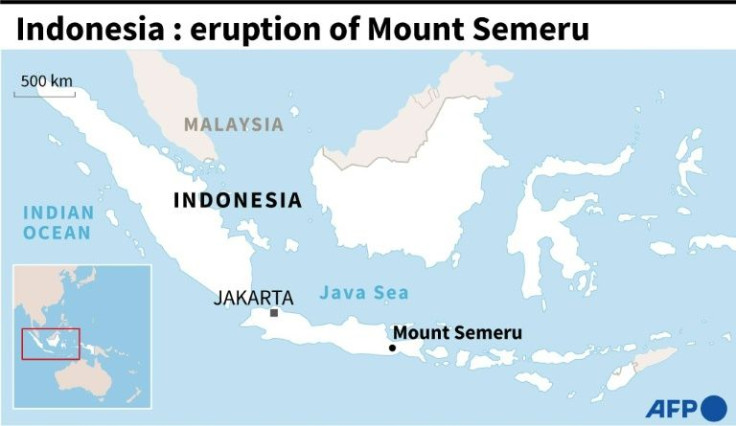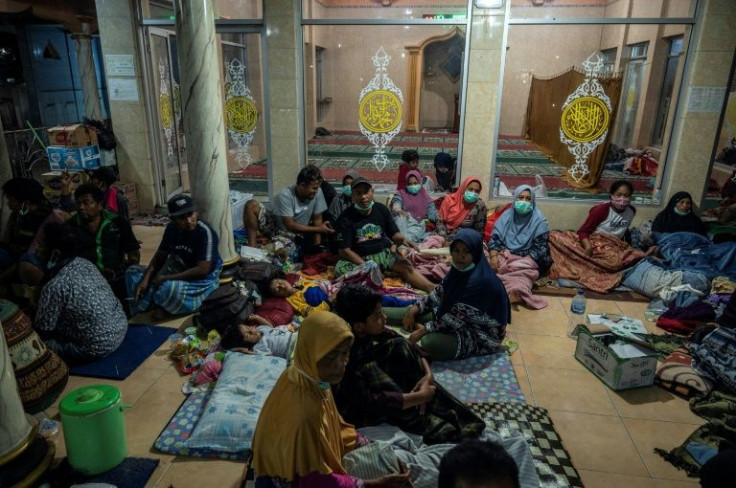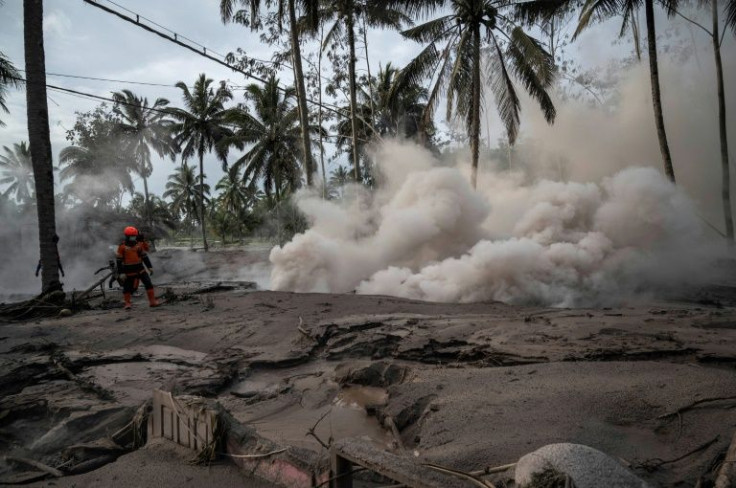Indonesia Volcano Eruption Death Toll Rises To 14
Rescuers in Indonesia raced to find survivors in villages blanketed by molten ash Sunday after the eruption of Mount Semeru killed at least 14 people and left dozens injured.
The eruption of the biggest mountain on the island of Java caught locals by surprise on Saturday, sending thousands fleeing and forcing hundreds of families into makeshift shelters.

At least 11 villages of Lumajang district in East Java were coated in volcanic ash, submerging houses and vehicles, smothering livestock and leaving at least 1,300 evacuees seeking shelter in mosques, schools and village halls.
"We did not know it was hot mud," said Bunadi, a resident of Kampung Renteng, a village of about 3,000 people. "All of a sudden, the sky turned dark as rains and hot smoke came."
Dramatic footage showed Semeru pumping a mushroom of ash into the sky that loomed over screaming residents of a nearby village as they fled.

"The number of victims who died until now is 14 people," national disaster mitigation agency spokesman Abdul Muhari told a press conference Sunday.
Two of the victims have been identified, he said in an earlier statement.
At least 56 people including two pregnant women were injured in the eruption, health officials said, and most suffered serious burns.

President Joko Widodo on Sunday ordered a rapid emergency response to find victims after the scale of the disaster became clear, said state secretary Pratikno, who like many Indonesians goes by only one name.
As many as 10 trapped people were rescued from areas surrounding Lumajang, Muhari said, as villagers and rescuers worked through the night to find anyone alive or retrieve bodies.

But the rescue efforts were hindered by hot ash and debris, with evacuations temporarily suspended on Sunday due to ash clouds, Indonesia's Metro TV reported, highlighting the difficulty of the operation.
The country's geological agency said rain is expected in the next three days that could further hinder rescue work.
There is also a risk of the rain causing ash sediment to form a new river of hot lava, the country's top volcanologist Surono told the TV station.

Many people who sustained burns had mistaken the hot mud flow for floods so stayed in their villages, said Lumajang Public Order Agency spokesman Adi Hendro.

"They did not have time to run away," he told AFP.
Authorities said they are still trying to confirm the whereabouts of at least nine people.
Lava mixed with debris and heavy rain destroyed at least one bridge in Lumajang, preventing rescuers from accessing the area.
Emergency services footage showed a desolate scene in the village of Kampung Renteng, with rescue workers toiling surrounded by buckled buildings and fallen trees.
"There were 10 people carried away by the mud flow," said Salim, another resident of the village.
"One of them was almost saved. He was told to run away but said, 'I can't, who will feed my cows?'"
In other areas, villagers desperately tried to salvage their belongings from wrecked homes, carting mattresses and furniture on their shoulders while others carried goats in their arms.
Locals have been advised not to travel within five kilometres (3.1 miles) of Semeru's crater, as the nearby air is highly polluted and could affect vulnerable groups, Muhari said.
Ash spewed by the volcano travelled up to four kilometres away, Indonesia's geological agency reported, reaching as far as the Indian Ocean in the southern part of Java.
The volcano's alert status has remained at its second-highest level since its previous major eruption in December 2020, which also forced thousands to flee and wrecked villages.
Indonesia sits on the Pacific Ring of Fire, where the meeting of continental plates causes high volcanic and seismic activity, and the country has nearly 130 active volcanoes.
In late 2018, an eruption in the strait between Java and Sumatra islands caused an underwater landslide and tsunami that killed more than 400 people.
© Copyright AFP 2024. All rights reserved.





















